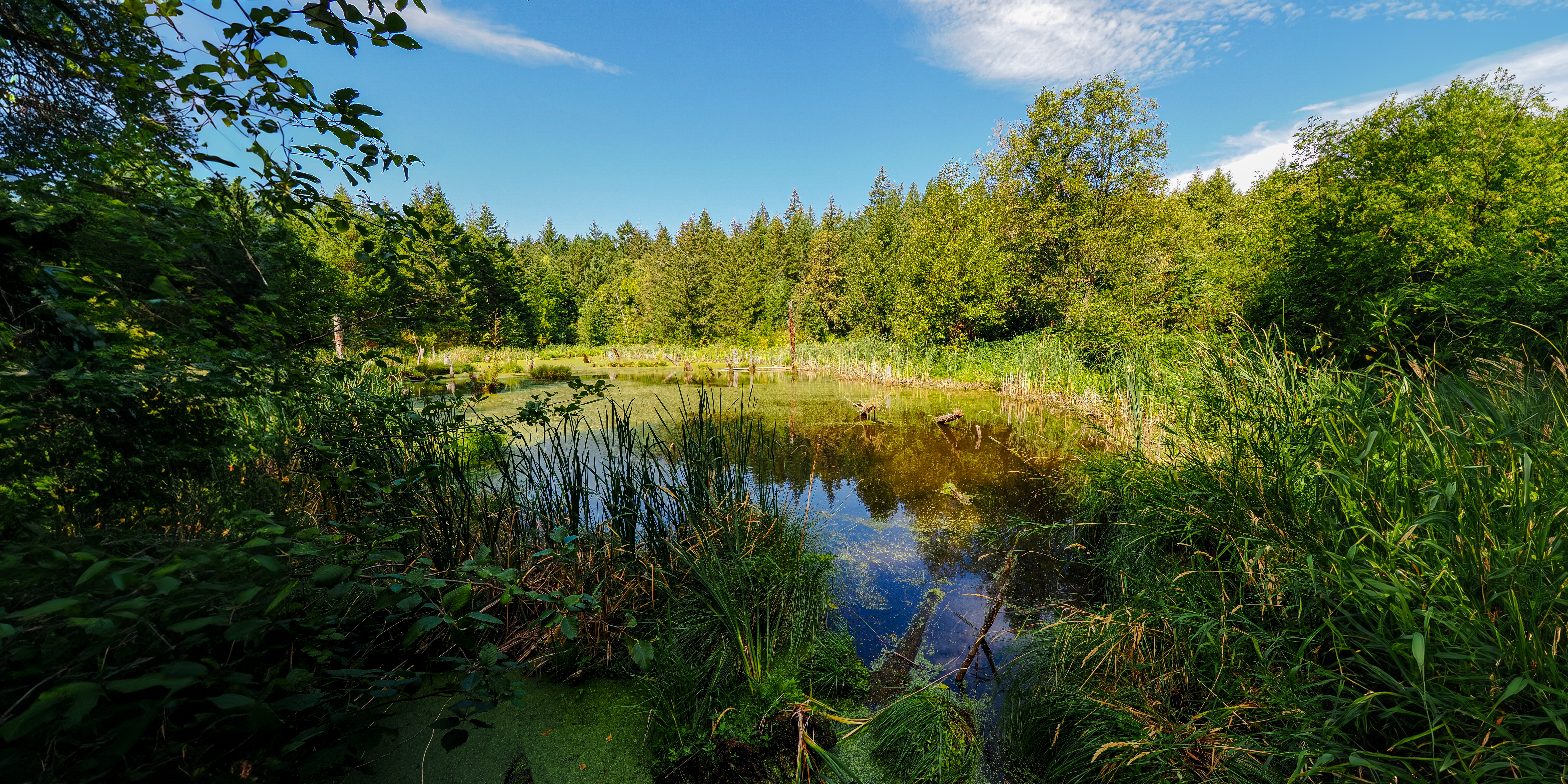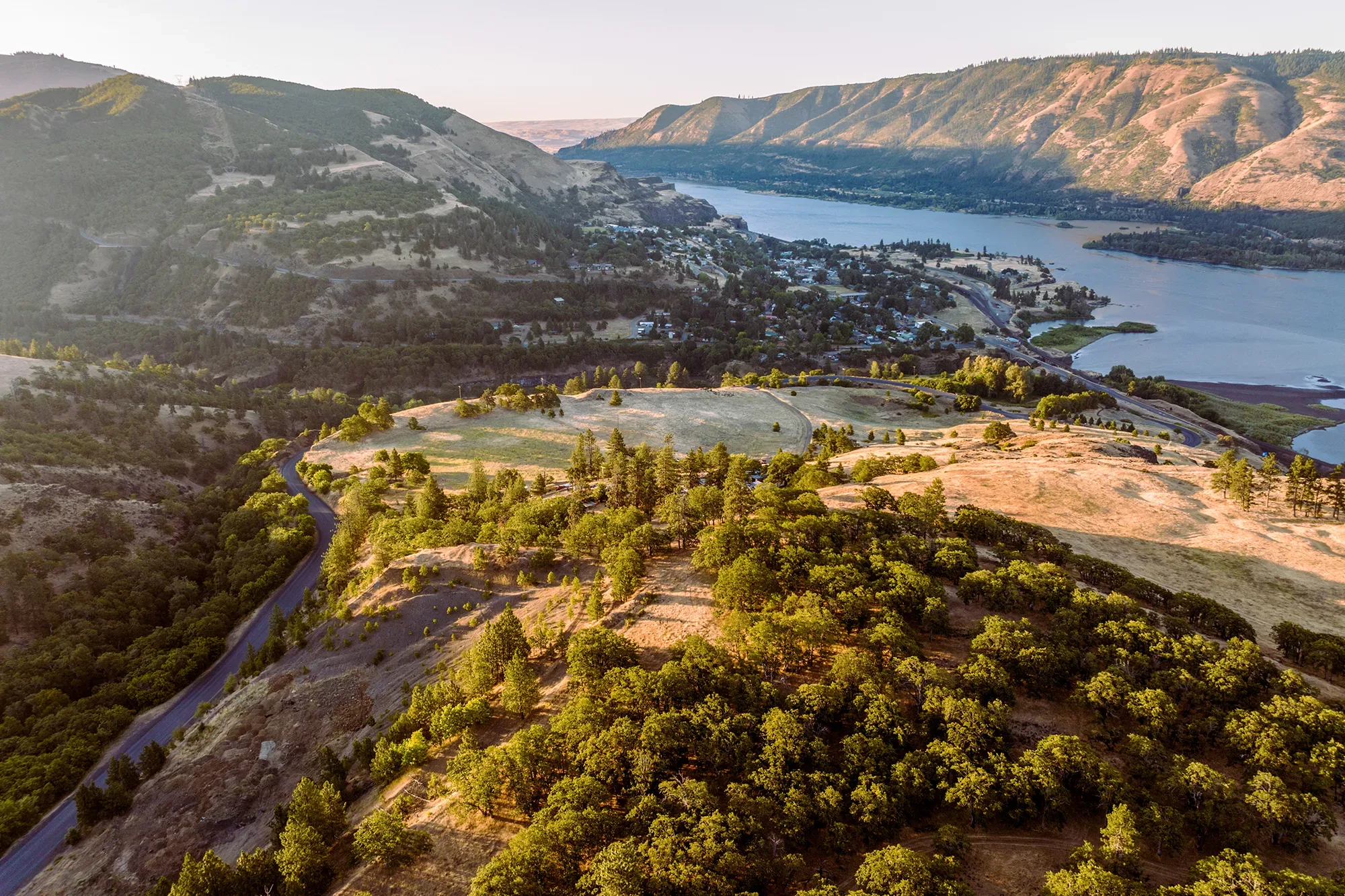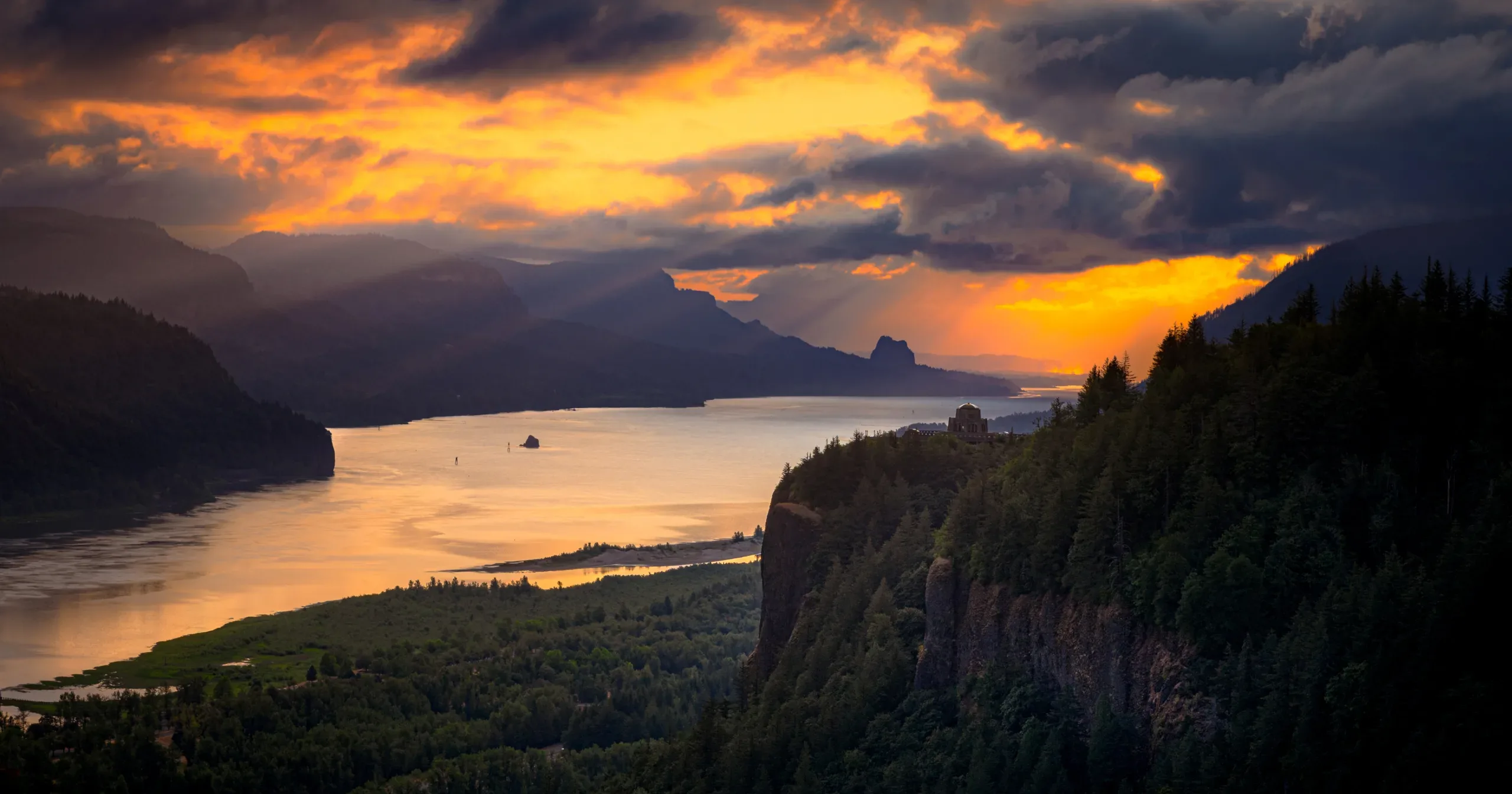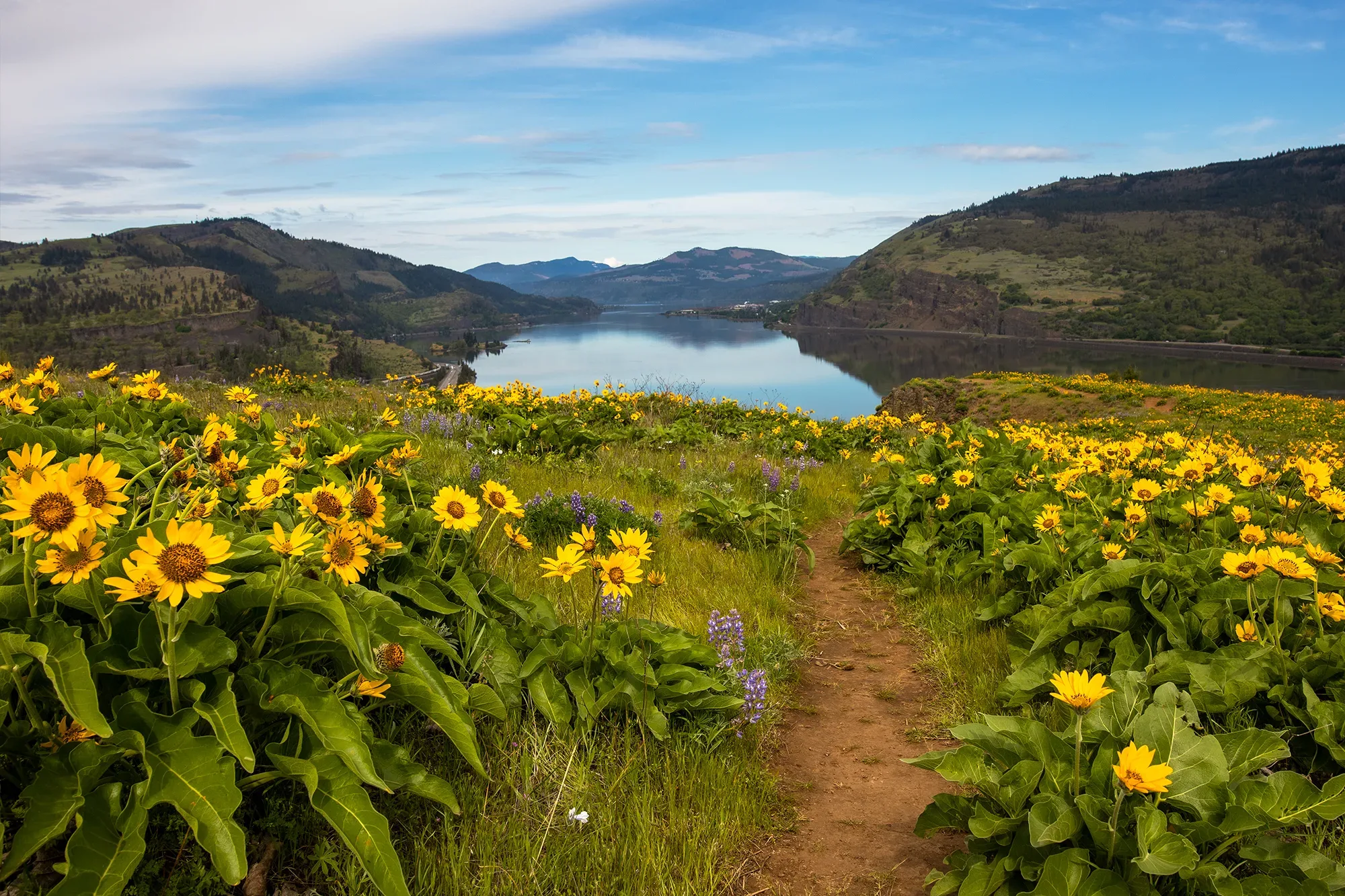In April 2024, Friends acquired Alashík Preserve, an ecologically critical property nestled in the wooded valleys of Skamania County. The acquisition marks a major conservation win, permanently protecting habitat for the endangered northwestern pond turtle and shielding the landscape from the threats of logging and mining.
Deep in the valley between Dog and Wind Mountains in Skamania County, Washington, Turtle Haven and Alashík Preserves are thawing out from the cold winter, and the northwestern pond turtles that live there are waking up from months of brumation (a state of dormancy similar to hibernation). With the weather now trending in our favor, Friends of the Columbia Gorge’s on-the-ground work to restore these areas will begin anew.
Preserving a “Unique Landscape”
Evergreen forests, patches of open meadow, and abundant streams and ponds characterize the valley between Dog and Wind Mountains.
“The geography of the area, particularly how wet it is, is really unique,” Frances Fischer, preserves manager for Friends of the Columbia Gorge, says. “The land is idyllic for turtles because they prefer ponds, but need meadows and open forest close by for nesting.”
The valley has been a priority for conservation efforts since the early 90s, when northwestern pond turtles were listed as an endangered species by the Washington Department of Fish and Wildlife. At the federal level, Northwestern pond turtles are now being considered for status as a threatened species. The ruling was proposed in 2023, and a decision will likely be made later this year.
In 2015, Friends’ increased its focus on the valley between Dog and Wind Mountains in light of data from The Nature Conservancy that recognized the land as “highly resilient” to climate change. “Highly resilient” means the valley is expected to provide healthy habitat for many different plants and animals, even when other nearby habitats are no longer suitable. The Turtle Haven and Alashík Preserves make up roughly one-fifth of this 1,000-acre valley.
“A White Whale for Conservation”
Friends acquired Turtle Haven in 2015 and began the arduous process of restoring the land. But even as restoration neared completion at Turtle Haven, the adjacent Alashík property still belonged to a family with numerous timberland holdings across the Gorge, as it had since at least 1919.
“Alashík was a bit of a white whale for conservation efforts in this area,” Sara Woods, stewardship manager for Friends of the Columbia Gorge, says.
When the property finally came on the market in 2024, it was listed as timberland. Additionally, the owners sought to maintain the mineral rights to the property. This would have allowed them to mine the property after it was logged by its new owners.
Mining would have had devastating impacts on Alashík, Turtle Haven, and the surrounding lands. Alashík sits directly above Turtle Haven at slightly higher elevation, so winter rains would have carried logging debris and mining runoff through the forests and ponds that Friends and the U.S. Forest Service worked for years to restore and protect.
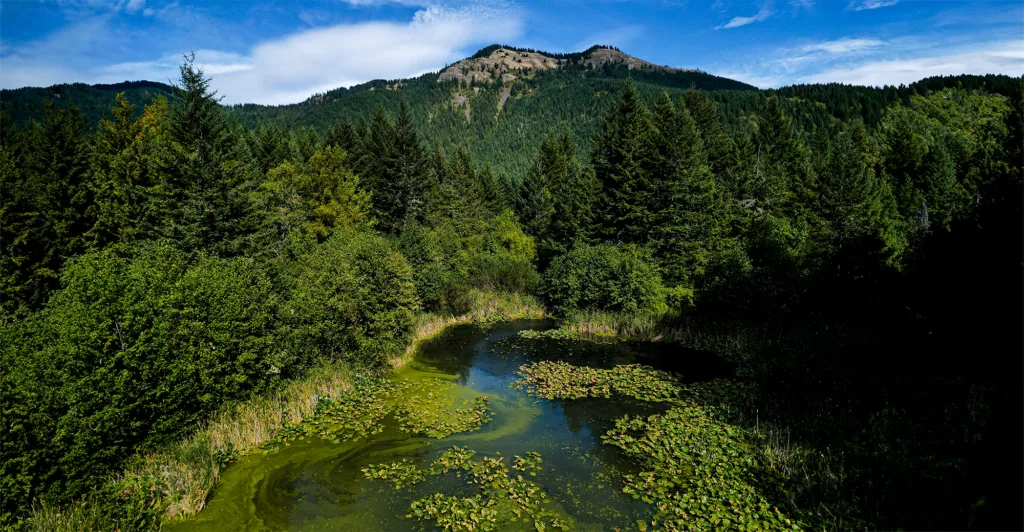
Friends put in an offer on the property that matched the asking price, but the owners were not inclined to give up the mineral rights and accepted a competing offer from a timber company that allowed them to retain mineral rights. But when the competing offer fell through during closing, it left an opening for Friends to buy the property.
The late Dan Bell, former land trust director for Friends, spearheaded the effort to acquire the property and finalized the deal in April 2024. With the acquisition of Alashík, all of the critical turtle habitat in the valley is now under the control of conservation organizations or federal agencies.
“We were stoked,” Woods says of the acquisition. “It was a miracle.”
Friends named the property Alashík, the Sahaptin word for turtle. Sahaptin is spoken by several Tribes throughout southern Washington and northern Oregon.
“The Blueprint for Turtle Restoration”
Looking back, Woods describes the Turtle Haven efforts as “phase one” of restoration in the valley.
“I learned everything about turtle habitat restoration by working at Turtle Haven,” says Woods, who has managed the property since it was acquired in 2015. “Now we have a blueprint – we can apply what we learned at Turtle Haven directly to the efforts at Alashík.”
Friends will begin restoration at Alashík by working with the Washington Department of Fish and Wildlife (WDFW), Mt. Adams Resource Stewards, and the U.S. Forest Service to control the American bullfrog population, an invasive species that multiplies prolifically and eats baby northwestern pond turtles. They will also focus on removing invasive Himalayan blackberry bushes that obstruct turtle movement.
Finally, Friends will make improvements to ensure ideal breeding grounds for northwestern pond turtles. For example, they mow the grass at Turtle Haven every fall, so the ponds will get enough sun exposure to warm them to meet the turtles’ nesting preferences.
Return of the Northwestern Pond Purtle
But simply restoring the land will not bring back the endangered turtle.
The northwestern pond turtle is a bit like an orchid, requiring very specific conditions to survive and thrive. They are small and timid, take a long time to mature, and lay only a few eggs at once — all of which make them extremely vulnerable to declining populations and extinction.
With the acquisition of Alashík, all of the critical turtle habitat in the valley is now under the control of conservation organizations or federal agencies.
That’s where a program to raise and release northwestern pond turtles comes in. WDFW, the Oregon Zoo, and the Woodland Park Zoo in Washington capture a portion of baby turtles at the end of the summer and raise them at the zoos for nearly a year. These tiny turtles — just the size of a tablespoon when they hatch — are kept in perpetual summer-like conditions, allowing them to triple in size by the time they are released the following summer. When they are released, their size protects them from being eaten by bullfrogs.
Zoo-reared turtles were released at Turtle Haven in 2019 and again in 2020. Woods says a turtle release at Alashík could happen in the coming years, following restoration efforts.
By all accounts, the turtle release is a delightful experience. “It’s all so cute,” Woods says. “Baby turtles cannot be disliked by anyone.”
When held above the pond, the little turtles start to kick their legs as if they are already swimming. They are gentle and quiet – and above all – “they’re determined to get in the water,” Woods says.
A Canary in the Coal Mine for Climate Change
Despite their diminutive size and skittish nature, the northwestern pond turtle is critical to informing climate and restoration efforts.
Because these turtles are highly sensitive to changes in the landscape, they are considered a “sentinel species” — essentially, a canary in the coal mine for climate change that provides scientists and conservation managers with a gauge of the severity of climate change and its impacts.
Ensuring that animals and landscapes continue to thrive in a changing climate will not only benefit these natural resources, they will also have downstream impacts for people.
“You have so many communities around the Columbia Gorge that rely on this area for drinking water, recreation and more,” Gorman says. “By preserving this land and supporting its resilience to climate change, we can help lessen the risks of threats like wildfires and decreasing water supply, and have a positive impact on communities, agriculture and tourism.”
Focusing conservation efforts on habitats that are well-suited for endangered species and on landscapes that are naturally resilient to climate change allows Friends to maximize their impact.
“It’s like getting the most bang for your buck,” Gorman says.
“We Can Do Hard Things”
On the 10th anniversary of purchasing the Turtle Haven preserve, and embarking on the next phase of the project at Alashík, this project is a bright example of how conservation work at Friends and in the Gorge has evolved.
Decades ago, much of the valley was vulnerable to logging and development.
“I remember wringing our hands, thinking, ‘What is going to happen here? Are we going to be able to protect this?’” Gorman says. “To now look back and think, yeah, we did. It’s a really good feeling to see that happen.”
The progress “shows me we can do hard things,” Woods says.
Discover Alashík: Get an inside look at Alashík Preserve, including an aerial tour, CGI glimpse of a clearcut future that never was, a walkthrough with our land trust team, a baby turtle release, and the story behind the land’s protection.
—
Tess Wrobleski is a Seattle-based freelance writer specializing in scientific and climate-centric writing. Find more of her work at tess-wrobleski.com.

